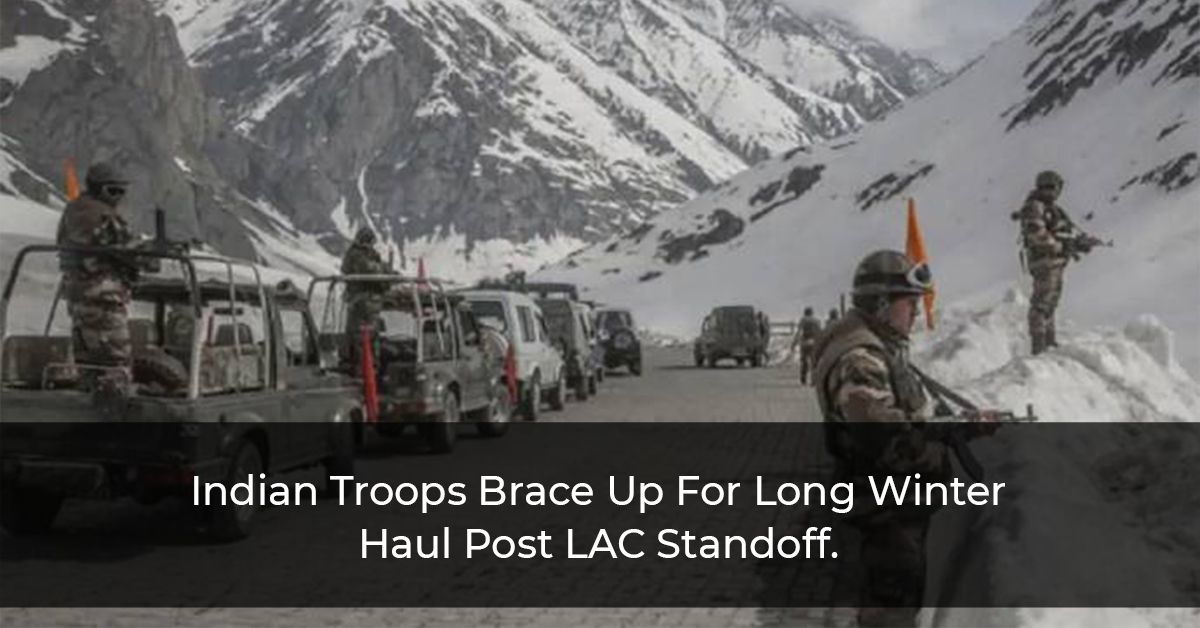Highlights:
- Army troops posted in Eastern Ladakh furnished with warm clothing supplies, loftier arsenal, well built infrastructure to cope up with the consecutive year of bone-chilling winters.
- New-aged assault rifles, machine guns, indigenous K9 Vajra T guns, construction of high mobility roads, additional warehouses and deployment of supernumerary troops among the many measures undertaken by the Indian Army, Indo-Tibetan Border Police and Paramilitary forces.
With the arrival of another consecutive year of freezing winters, India preps up its troops at the Line of Actual Control, particularly in the Eastern Ladakh region. The troops have been furnished with novel Finnish Sako sniper rifles, Israeli Negev Light Machine Guns, the American Sig Sauer assault rifles in addition to a diverse range of drones, the native K9 Vajra T guns, and the M777 Ultra-Light Howitzers (ULH).
In an attempt to combat the dipping temperatures, the troops stationed at LAC will be supplied with an abundance of special rations, umpteen liters of kerosene, and special fuel oil coupled with surplus warm clothing to beat the bone-numbing temperatures at the altitude.
Activities involving the expansion of infrastructural framework are being carried out. These include the building of temporary shelters, together with roads and bridges for enhanced movement of troops when required. To facilitate storage of huge quantities of ration, the Indo-Tibetan Border Police has hiked the amount of warehouses in the region. In view of the tension brewing across the border earlier this year, the paramilitary forces supplied its troops with added ration and food.
India and China fail to draw up a concord over disengagement along the Line of Actual Control (LAC) ahead of the 13th round of military talks that took place last week. The India-China standoff at LAC has been incessant since May 2020.
Also Read, Lakhimpur Kheri Violence Is ‘Condemnable’, But Don’t Be Selective: Nirmala Sitharaman
It was expected that the latest talks between the two countries would result in further disengagement at the Patrolling Point 15 (PP15) in the Hot Springs area. Any such development at Depsang Plains might take longer than usual.
However, owing to the deadlock situation, the Indian troops would keep holding the newly captured posts at exceedingly high altitudes along the LAC which were uninhabited prior to the Galwan valley clashes in June, last year.
A strong Chinese patrol reportedly had infringed the LAC and tried to destroy some Indian-occupied bunkers. Frontline troops have been equipped with American Sig Sauer assault rifles and Israeli Negev Light Machine Guns. Additionally, activities for the delivery of a dozen of fast patrol boats and 17 troop-carrying boats have also begun. Procurmentoperations of counter-drone systems are also underway.
An estimated 50,000 – 60,000 troops have been supplemented by the army along the LAC and few of the existing formations, including the strike cops, have been reorganized. As mentioned by a defence official “The turnover is managed so as to retain a certain percentage of experienced troops as well. Prior to the turnover, on-the-job-training and area familiarisation is carried out.”
The Army awaits a green signal from the Government for the recruitment of 10,000 additional jawans. According to defence sources, the Chinese have built three infantry divisions and 6-8 combined arms brigades with approximately 450 tanks.
Air Chief Marshal VR Chaudhary said that the People’s Liberation Army Air Force (PLAAF) is still positioned at three air bases facing the eastern region of Ladakh and is Swiftly building additional infrastructure.


